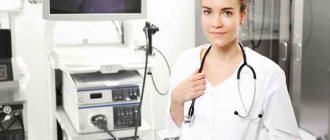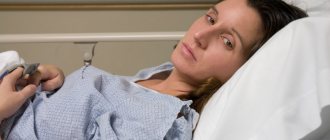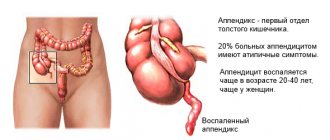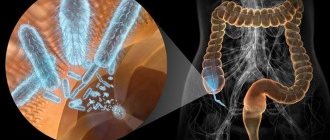Document meaning
A certificate of incapacity for work is the only document on the basis of which the state compensates for days an employee misses work due to illness.
Based on this, each patient is interested in correctly recording all the circumstances of treatment in the form and in complying with the requirements for filling it out. There are several differences between sick leave certificates issued after removal of appendicitis and documents reflecting other ailments. Namely:
- the form consists of two blocks of information that separately record periods of inpatient treatment and days of outpatient observation;
- it is allowed to maintain the document by two specialists, including the attending surgeon and the district physician who continues observation after hospitalization;
- a code display of the circumstances of the disease indicates surgical intervention, without specifying the disease;
- There may be cases of continuation of treatment in several cities, in particular at a medical resort during rehabilitation.
Causes of negative consequences
Bed rest
Lying in the hospital does not mean lying in bed! 12 hours after the operation, they are already prescribed to change the position of the body in bed, and a day later to get up and move around the ward and hospital corridors. From the second day, regular physical therapy exercises are provided, first from a lying position. Neglecting this recommendation provokes the occurrence of adhesions.
Physical exercise
Excessive activity after removal of appendicitis is fraught with divergence of the external suture or the formation of a hernia. Thus, how long patients stay in the hospital after appendectomy depends on many circumstances. Taking into account the peculiarities of the need for surgical intervention, the correct attitude towards recovery, adherence to the regime and compliance with medical orders will create conditions for reducing the period of hospitalization.
Removal of the appendix - what kind of operation?
The appendix is a vermiform appendage of the cecum that is involved in the process of hematopoiesis. Appendicitis is an inflammatory process that occurs in the appendix: the thin mucous membrane becomes inflamed, then the inflammatory process spreads to the appendix.
To prevent the disease from rupturing the appendix, emergency surgery (appendectomy) is prescribed. Delay threatens peritonitis, deterioration of general condition and death.
The process is removed only during surgery: laparoscopy or laparotomy. Let's take a closer look at each type of surgical intervention, how it is performed, and when it is appropriate.
Laparoscopy
Using this technique, the surgeon removes the inflamed appendage through small incisions in the abdominal wall. During the operation, surgeons use a special optical device - a laparoscope (microscopic television camera). It is inserted into the abdominal cavity and makes accurate diagnosis possible without an abdominal incision.
Laparoscopy is a more gentle method for removing the appendix. Patients recover within a few days, and only 3 small and almost invisible scars (5-10 mm) remain on the abdomen at the puncture sites.
If complications arise, for example, the appendix ruptures or inflammation spreads to nearby tissues, laparoscopy is not enough. This type of intervention can be performed, but only for diagnostic purposes.
To remove the inflamed appendix and clean the abdominal cavity, surgeons resort to laparotomy. This is an abdominal operation in which the abdominal cavity is dissected.
The length of the incision is 5-10 cm. After abdominal surgery, recovery takes longer; the high temperature can last from 5 to 7 days.
06.05.2019
One of the common reasons for calling an ambulance is inflammation of the appendix, the vermiform appendix of the cecum. The disease usually manifests itself as acute abdominal pain, attacks of nausea, vomiting and high body temperature. Most often, appendicitis is diagnosed in young people aged 15 to 30 years.
Women are more susceptible to this disease. In case of acute inflammation of the appendix, the patient must be immediately taken to the hospital. Since this organ is not considered vital, doctors remove it through surgery.
Therefore, many patients are interested in how long they stay in the hospital with appendicitis.
Lit.: Great Medical Encyclopedia, 1956
Why appendicitis occurs has not yet been established. Doctors identify several main causes of this pathology. These include:
- penetration of pathogenic microorganisms into the body.
- infectious processes.
- diseases of the gastrointestinal tract.
- blockage of the lumen with feces.
- pathological neoplasms in the intestine.
In addition to the above reasons, other predisposing factors can provoke inflammation of the appendix. The most common include: weakened immunity, frequent constipation, poor diet and bad habits.
After this, he will prescribe an instrumental examination. Once the diagnosis is confirmed, the doctor will select the type of operation and tell you how long you will have to stay in the hospital after appendicitis removal. This depends on the individual characteristics of the patient’s body.
We suggest you familiarize yourself with the conclusion of a second marriage, how to hold a wedding and what to wear for the newlyweds
As soon as the patient undergoes surgery and the appendix is removed, he will feel general weakness of the body, dizziness, and severe pain at the incision site. Therefore, at first the person is in the intensive care unit. There he is given all the necessary help.
After 3-5 days, the patient is transferred to the general ward. Based on the person’s condition, the doctor will tell you how many days outpatient sick leave will last after appendicitis.
Usually, if there are no complications, then the further prognosis is quite favorable, and complete recovery takes the patient approximately one to one and a half months.
Usually the doctor himself determines how long the patient needs to stay in the hospital. The patient's health status plays an important role in this. Often the period of hospital stay lasts no more than 10-14 days. However, for about another 1.5-2 months the patient should adhere to certain doctor’s instructions, namely.
How many days sick leave is open after surgery to remove appendicitis depends on each individual case. The individual characteristics of the patient are taken into account, such as age and concomitant diseases. The presence or absence of complications also significantly influences. And we must not forget about the rehabilitation period, which goes differently for everyone.
Grounds and terms
The only legal basis for recognizing a patient's temporary disability is surgical intervention.
That is, recording complaints of pain and confirming the diagnosis with tests is not a sufficient basis for opening a certificate of incapacity for work.
Determination of the presence of the disease is the reason for surgical procedures, which, in turn, oblige the medical institution to issue sick leave after appendicitis.
How many days sick leave will last after appendicitis depends on the attending doctor. According to the general rule and medical practice, the patient needs only two weeks for complete healing of the skin after surgery.
The same period is allotted for complete rehabilitation after the procedures.
But when issuing a sick leave for appendicitis, doctors determine approximately how many days the patient will need for a complete recovery, based on the type of surgical methods used.
Table No. 1 “Length of disability after surgery for appendicitis, depending on the technique used”
Appendicitis is more common in school-aged children, but can also occur in adults.
The disease limits the ability to work, and the necessary surgical intervention requires sick leave for both adults undergoing surgery and those caring for their child.
How many days of sick leave are given after appendicitis and what patients should expect - read the article.
Appendix removal
Appendicitis is an acute inflammation of the appendix of the dome of the cecum, requiring emergency surgery - appendectomy.
Surgery for appendicitis is common; the disease is rarely complicated by a secondary infectious process if treated in a timely manner. Hospital stay does not exceed 7-10 days.
Patients are interested in the question of how long they stay in the hospital after appendicitis is removed.
The period of inpatient stay depends on many factors: the severity of the disease, the type of surgical intervention, complications (including postoperative ones), the nature of the sick leave (caring for a minor child). It is important to take into account the status of an adult or a child: special periods of sick leave are provided for in case of disability.
The stay in the hospital also depends on the type of operation performed and the choice of intervention tactics:
- drug antibacterial therapy for chronic appendicitis - no more than five days;
- laparoscopic method through punctures of the abdominal cavity - 7-10 days, including the postoperative period;
- abdominal surgery - up to 30 days from the moment of hospitalization.
The nature of the work activity of an adult patient who has undergone an appendectomy is of no small importance. The period of sick leave can be increased in cases of work associated with dangerous and harmful production, increased physical activity, and unfavorable working conditions (in the cold, in the heat, in the open air).
We suggest you read: How to avoid getting into trouble when applying for sick leave
patients stay in the hospital after surgery with a favorable recovery for up to seven days; after the stitches are removed (if necessary), they are discharged on the seventh day, and then the sick leave is closed.
if a parent is caring for a hospitalized child under 3-4 years of age, sick leave begins from the moment of hospitalization and ends with discharge from the hospital - 5-7 days.
For the parent of a disabled child, leave to care for him, regardless of age, can be increased to 30 days. adults are discharged on days 5-7, at which time the sick leave is closed (plus or minus three days).
with complications
in case of complications after surgery, the hospital period varies from 15 to 30 days, however, according to the decision of the medical commission on the need for longer treatment (in hospital or outpatient conditions), it can be extended up to a year.
Parents of children under seven years of age for care after a complicated operation and during a long stay in hospital require sick leave until the child’s condition improves and is discharged.
children over 14 years old can be in the hospital without parents and do not need constant care (by decision of the head of the department), so sick leave is issued for 3-5 days. Due to the child's disability, one of the parents can be on carer's leave until his full recovery.
How long does sick leave last for adult patients who have had appendicitis with complications? under general conditions it ranges from 15 to 30 days. the issuance of certificates of temporary disability is regulated by orders of the Ministry of Health of the Russian Federation and the Ministry of Labor of the Russian Federation.
When are you discharged from the hospital after appendicitis? The recovery period after surgery depends on the technique used to perform it. If the operation is abdominal, then the total stay in the hospital can reach 15 days. With successful treatment, the time spent there rarely exceeds seven days.
In the early postoperative period, bed rest is indicated; it is necessary to monitor stool and general condition. Antibiotic therapy is immediately prescribed to avoid secondary infectious complications.
early rehabilitation also includes:
- gentle nutrition (slimy porridges, soups, pureed foods);
- protective regime;
- dressings;
- taking medications.
On the first day, medical personnel and relatives look after the patients; they monitor the recovery from anesthesia and the patient’s sensations. If he feels normal and there are no complications, he can get up the next day.
early rehabilitation without complications takes 2-3 days. in the following days the person is able to take care of himself.
for complications
How long does appendicitis surgery last and how is it performed?
It is impossible to “cure” appendicitis. In case of an inflammatory process, the appendix can only be removed, and the sooner this is done, the better for the patient.
As a specialist, I can say that the optimal removal time is no more than an hour from the moment of diagnosis.
As soon as a person comes to a medical institution with such a problem on his own or comes to us with a severe exacerbation in an ambulance, an examination is immediately carried out, a blood and urine test is performed, and the patient is placed in a ward and prepared for surgery.
The operation to remove the appendix lasts on average half an hour, after which the patient falls into the hands of resuscitators and after 8-12 hours he is transferred to the ward. From this moment the rehabilitation period begins, which lasts differently for everyone: some are discharged on the fourth day, while others remain in the hospital for more than a week.
In any case, when the examination shows that the person can be released, he needs to receive a sick leave certificate. First, the attending physician prepares a discharge summary, to which is attached the result of the electrocardiogram.
The epicrisis indicates the time of stay in the hospital, and at the end of the document the period for which a certificate of incapacity for work is issued is indicated.
Important to remember! You, in turn, can receive it from your local physician at the clinic at your place of residence.
The period of incapacity for work during which the sick leave lasts is determined by the attending physician based on the patient’s condition at the time of discharge.
Usually, after surgery and discharge from the hospital, a person is on sick leave from 10 days to two weeks, but you can, by agreement with your employer, go to work earlier, and it is better to agree to work light jobs or work part-time in the first couple of weeks.
The duration of sick leave is determined by a number of factors:
- Appendix removal method. If laparoscopy, which is considered less painful than laparotomy, was performed, sick leave usually lasts no more than one week. After laparotomy, this period can be up to fifteen days.
- General condition of the patient after discharge. In my practice, there was a case when a person had his appendix 13 centimeters long removed (the average length is 7-10 centimeters). The suture took a long time to heal, and the patient was given a period of incapacity for work of two weeks.
- Development of possible complications (peritonitis, blockage of blood vessels in the operated area with a thrombus, abscesses, accumulation of purulent infiltrate in the abdominal cavity). In such cases, after the validity of the sick leave, an additional examination is required, after which the sick leave is extended (by how much depends on the specific case). Sometimes it may even require further surgery.
In most cases, in case of complications that require extension of sick leave, a commission examination is necessary.
For this, the patient needs to visit the clinic, but if the complications are so severe that the person cannot move independently, a clinic employee is obliged to come to his home.
Helpful information! But despite the severity of the complications, there is an upper threshold approved by law: it is impossible to extend sick leave for more than 12 months.
Even if a person “goes off” without consequences and the stitch heals quickly, in the first two to three months he should severely limit physical activity. This is especially true for those who work physically or play sports. Fast walking and running, as well as lifting weights weighing more than 5-7 kilograms are not allowed.
But in terms of nutrition and diet, everything is a little more complicated. During the first month of rehabilitation you will have to eat according to dietary table No. 5. This means that you can only eat the following foods:
- rye or wheat bread and crackers without added sugar;
- low-fat cottage cheese and milk with minimal fat content, as well as low-fat kefir and yogurt;
- vegetables - cucumbers, zucchini, pumpkin, potatoes, tomatoes;
- The preferred fruits are pomegranate, prunes and sweet apples;
- any types of greens;
- lean meat (chicken, turkey, rabbit, veal), and dishes made from such meat must be steamed;
- lean fish;
- buckwheat, rice, oatmeal;
- soft-boiled eggs or as a steam omelet.
It is important to know! Following a diet is an important point in the recovery process and the key to a speedy recovery.
Only after three to four months can you return to your usual diet. Despite the ban on serious physical activity and restrictions on sports, I do not recommend strict bed rest. A sedentary state during rehabilitation also has its negative sides.
In particular, peristalsis suffers: in the absence of physical activity, intestinal activity decreases, which can result in constipation.
Not only is this phenomenon unpleasant in itself, but in such situations pathogenic microorganisms multiply in stagnant feces.
Healing processes occur individually, and in some cases you can make your own decisions about when and how to begin returning to your normal rhythm of life.
Appendix removal
The number of days that the patient will have to spend in the hospital depends on the speed of recovery of the body and the type of operation, there are two of them:
- laparoscopy. Three small punctures are made in the peritoneum, leaving scars no wider than 1 cm each. Laparoscopy is considered a low-traumatic procedure - after it you are discharged on the second or third day;
- laparotomy. In this case, a dissection of the cavity is made up to 10 cm. Recovery is longer and more complex. They are usually discharged from the medical facility on the 10th day.
Currently, doctors are trying to perform surgery to remove the appendix using a minimally invasive method, however, if the inflammatory process is prolonged or the organ has ruptured, laparoscopy is not enough.
The diagnosis of appendicitis is made when the vermiform appendage of the cecum becomes inflamed. Initially, this organ was involved in the digestion process, but over the course of evolution, the appendix lost its main function.
At this stage of human development, he performs several secondary tasks:
- participates in the functioning of the lymphoid system;
- produces some enzymes and hormones that regulate digestion.
Inflammation of the appendix occurs due to its obstruction. Fecal stones or hypertrophied lymph nodes can clog the epididymis.
Less commonly, appendicitis is caused by tumors, foreign bodies, or parasites. In all of these cases, mucus accumulates in the appendix, which creates fertile ground for the activity of pathogenic microorganisms. The process is accompanied by sharp pain in the right lower abdomen, nausea, and diarrhea.
At the first signs of appendicitis, you should seek medical help as soon as possible. Delay threatens severe complications, including death.
Inflammation of the cecum occurs in two forms: acute and chronic (extremely rare). Chronic appendicitis develops after acute and is accompanied by sclerotic changes in the wall of the appendix and its atrophy. After laboratory and hardware diagnostics, the inflamed appendix is subject to removal (appendectomy), which is carried out in several ways.
- Laparotomy. The inflamed appendix is excised through an incision in the soft tissue located directly above it.
- Laparoscopy. Access to the appendage is through punctures in the abdominal wall in the area of the navel and appendix.
Laparotomy is considered an abdominal operation. Laparoscopy is the more preferable method of resection of the cecum due to its relatively low morbidity, and, as a consequence, a shortened recovery period and a low risk of complications.
Appendix removal
One of the most common surgical interventions is appendectomy. This is the name for inflammation of the appendix (appendix).
When eliminating pathology at an early stage, minimally invasive laparoscopy is performed. If signs of peritonitis appear, abdominal surgery is necessary.
Treatment can begin with laparoscopy and end with a classic incision in the abdominal cavity (if the inflammatory process spreads beyond the appendix).
How long do you stay in the hospital after appendicitis removal? Usually, the specialist himself determines how much time the patient needs to spend in the hospital, focusing on the person’s health condition.
Treatment of appendicitis
Appendicitis occurs due to several reasons:
- infections;
- coprolites;
- diseases of the endocrine system;
- vascular disorders;
- helminthic infestations;
- hyperplasia of lymphoid tissue;
- foreign bodies (seeds, seed husks);
- with hereditary predisposition;
- with deformation of the process.
Inflammation can be acute or chronic. It can occur in a simple and destructive form. The latter has three stages: phlegmonous, gangrenous, perforative.
In women, an acute attack of the disease occurs more often than in men. If appendicitis is suspected, it is prohibited to heat the painful area, eat or drink, or take painkillers until the diagnosis is confirmed.
Treatment for appendicitis involves surgical removal of the inflamed appendix. The patient is in the hospital.
The operation can be carried out using the laparoscopic method or the classic version. In the first case, the appendix is removed using 2-3 punctures in the abdomen and manipulating devices inserted into them.
Grounds and terms
The duration of the rehabilitation period, which is prescribed on the sick leave and frees the patient from work, depends on the patient’s condition and on the method by which the operation was performed:
- with laparotomy it is 5-7 days;
- with laparoscopy – 10-15 days;
- for complications during surgery or the postoperative period – up to 30 days.
How to renew?
To request an extension of the terms specified on the sick leave, you need to:
- contact the head doctor of the hospital or your attending physician;
- come on your own or wait for a medical commission to conduct an examination;
- the certificate of incapacity for work is updated depending on what decision the commission makes.
Only the attending physician or medical commission who work in the institution where the patient was operated on and treated has the right to extend sick leave. Independent amendments to the sick leave certificate are unacceptable; such a document is considered invalid.
Extension of sick leave is possible only in case of complications that appeared during surgery or during the rehabilitation period: diffuse or local peritonitis, rupture of the appendix, thrombophlebitis, appendiceal infiltrate (appearance of fluid).
We invite you to read: How many working people are there in Belarus?
If the patient is diagnosed with such complications, he continues to be treated in the hospital.
Depending on what decision is made by the doctors after the service, sick leave may be extended for up to 30 days. In particularly severe cases, this can be several months.
REFERENCE! The maximum period for which sick leave can be extended is 12 months.
The only legal basis for recognizing a patient's temporary disability is surgical intervention. That is, recording complaints of pain and confirming the diagnosis with tests is not a sufficient basis for opening a certificate of incapacity for work. Determination of the presence of the disease is the reason for surgical procedures, which, in turn, oblige the medical institution to issue sick leave after appendicitis.
How many days sick leave will last after appendicitis depends on the attending doctor. According to the general rule and medical practice, the patient needs only two weeks for complete healing of the skin after surgery. The same period is allotted for complete rehabilitation after the procedures.
| No. | Methodology | Peculiarities | Duration (in days) |
| 1. | Standard | Performed in the early stages with minimal damage to the skin | 5-10 |
| 2. | Emergency (appendectomy) | It is performed urgently after appendicitis bursts and takes longer | 15-30 |
In addition, in each of these situations, complications are possible, which are accompanied by a longer period of disability.
After laparoscopy: how many days of sick leave and when to be discharged
Despite the gentle effect of endoscopic surgery, rehabilitation after laparoscopy is still necessary - how many days of sick leave will last depends on the type of operation, the patient’s condition, and the presence or absence of complications.
The duration of sick leave during laparoscopy consists of two periods:
- postoperative – hospital stay;
- rehabilitation – treatment of the patient at home with control visits to the clinic.
The most critical are the first 24 hours. During this time, the patient must remain in the hospital. For the first 3–6 hours, it is forbidden to get up and drink. Afterwards you are allowed to drink liquid - up to half a liter during the day. You can’t eat for another 18–20 hours. You can then eat liquid or pureed foods.
The recovery period after surgery using laparoscopes is short - about a week. Typically, the patient is kept for 5 working days. If necessary, he is released after a couple of days.
After discharge, the patient remains at home for another 10–18 days. If necessary, the deadlines can be extended. It is impossible to predict exactly how long recovery will take. It all depends on:
- type of surgical intervention;
- complexity of the operation;
- whether complications arose.
Thus, the hospital bulletin is issued for the longest time during laparoscopy for organ removal and after an ectopic pregnancy. For various diseases of the stomach, surgery is also considered difficult: returning to a full life takes more than a dozen days. Rehabilitation is faster when cysts are removed and adhesions of the fallopian tubes are eliminated.
Additional Information! In many ways, the length of sick leave depends on the patient’s job. Thus, the loss of temporary disability for different work activities will differ.
And returning to heavy production after such a short period of time is impossible or allowed with significant restrictions.
Cholecystectomy (extirpation) is considered a complex intervention requiring long-term recovery. In this case, sick leave is issued for up to one and a half months.
The operation itself takes from 1 to 2 hours. The hospital stay lasts up to a week if there are no complications. Then the patient is sent home, where rehabilitation continues. It consists of drug therapy, diet, and physical therapy.
After laparoscopy of the gallbladder, sick leave is given on average for 19 days. The period can be reduced to 2 weeks, but no more.
If the patient’s activity is associated with intense physical activity, he is left for treatment for another 15 days.
If he cannot perform his duties even after this period, a medical commission is convened. It determines the indications for closing sick leave and when the patient can work.
Important! If the period is extended by more than a month, the patient must visit the clinic twice a month. During visits, the attending physician determines whether it is advisable to prolong rehabilitation. If the condition is satisfactory, the disability certificate is closed.
The average period for which sick leave is issued after surgery on the pelvic organs is 15 days.
However, this period varies depending on the type of surgery. So:
- laparoscopy of an ovarian cyst is considered one of the most gentle procedures; recovery after it takes 7–10 days;
- after tubal laparoscopy, treatment continues for a maximum of 45 days;
- after laparoscopy of uterine fibroids, rehabilitation takes approximately half a month;
- for hysterectomy (removal of the uterus), the sick leave period is 20–40 days.
During an appendectomy, sick leave is issued for an average of 14 calendar days (or 10 working days). But since complete recovery takes a month, people whose activities involve physical activity cannot return to their duties. Under such circumstances, they are considered disabled; going to work is allowed only with significant restrictions.
Sick leave can also be extended for a period of 1 to 12 months if there are serious indications. These include:
- perforation (perforation) of the organ;
- peritonitis - spillage of pus into the abdominal cavity;
- thrombophlebitis;
- formation of infiltrate.
Additional Information! If the appendix is removed due to acute inflammation (which happens most often), in most cases the sick leave will be 30 days.
According to the Russian Labor Code, sick leave is 15 days: 5 days for the postoperative period and 10 for home treatment. However, if necessary, the duration of therapy is increased. In unusual situations, it can be extended to a maximum of a year, but usually a month is enough.
Extension of sick leave is possible only based on the testimony of the medical commission and justified compelling arguments. The conclusion is issued based on the state of your health and the problems that arose during or after the operation. Most often they are the following complications:
- damage to the operated area or nearby organs, tissues and blood vessels;
- infectious and inflammatory processes;
- blood clot formation;
- intolerance to anesthesia and other unpleasant symptoms associated with allergic reactions to medications;
- disruptions in the functioning of the cardiovascular system;
- bleeding.
Important! Also, sick leave is extended in the presence of gynecological problems: inflammation of the appendages, damage to the uterus, fallopian tubes, ovaries.
In all of the above situations, the patient, in addition to the main treatment, requires recovery in a sanatorium. 24 days are allotted for it.
The main rehabilitation period is short - it takes from 1 to 4 weeks. For a quick recovery after laparoscopy you need to:
- adhere to a strict diet for the first 7 days after laparoscopy - eat food at room temperature and puree-like consistency;
- give up fatty, fried, canned, smoked foods for a month;
- enrich your diet with healthy foods high in vitamins and beneficial elements;
- Avoid alcohol and cigarettes for at least 4 weeks;
- do not take a bath or go to the sauna or solarium for 6 weeks;
- avoid prolonged exposure to the sun and hypothermia;
- do not fly on airplanes and avoid long trips;
- adhere to sexual rest for a month;
- do not lift more than 3 kg until complete rehabilitation;
- gradually move on to physical activity - for the first month only leisurely walks are allowed, then include therapeutic exercises;
- strictly follow the doctor’s recommendations and take prescribed medications - they cannot be canceled, if this is done at your own discretion, there is a high risk of complications.
If laparoscopy was performed on a woman, she also needs:
- wear a bandage for the first 3–4 days to restore the tone of the abdominal muscles;
- go to the gynecologist - he prescribes further treatment and determines when it is possible to allow sex and pregnancy planning;
- perform special exercises to prevent adhesions;
- If other gynecological pathologies are detected, you need to be treated.
A certificate of incapacity for work after laparoscopy is issued for an average of 15 days. But if there are complications, it is extended. Typically, patients are on sick leave for a month, but according to indications, the period is increased to a year.
Many people do not associate surgery to remove the vermiform appendix with a sufficiently high degree of severity of the intervention. This is an erroneous opinion, since any surgical operation, especially one involving penetration into the abdominal cavity, carries a certain degree of risk and, therefore, the approach to such an operation must be the most serious. No one can guess in advance what day they will be discharged on after appendicitis.
We will write today about how quickly you can be discharged from the hospital following surgery to remove appendicitis, and about some other nuances.
It would be imprudent to talk about specific and clearly defined periods of hospitalization after surgery for appendix removal.
After all, each patient has his own body with unique immunity and resistance.
This means that for one, everything can heal quickly and without complications, while for another, the temperature may rise or some other illness may occur after surgery.
1Laparoscopy. The operation is performed through a very small incision in the abdominal wall using a lighted endoscopic probe and microsurgical instrument. 2The classic method is appendectomy. An incision is made in the right ilium, through which the vermiform appendix is removed.
With this method, you will have to stay in the hospital for about 10 days, and with laparoscopic removal this period is reduced to 3-5 days.
After a successful operation, the hospital regime is observed. At that time:
- You should not eat food on the first day. You can't drink either. But to relieve thirst, the surface of the patient’s lips is moistened.
- If the patient's condition is excellent, after this period he is allowed to drink tea or broth.
- Three days after surgery, the patient is transferred to food in small portions five or six times a day with an interval between meals of no more than 2.5 hours.
- In the early postoperative period, the patient should eat according to dietary table No. 5. Below we will describe a list of food products that are acceptable in this case.
- Patients are transferred to normal nutrition no earlier than 4 months after surgery.
Even after switching to regular food, some nutritional rules are strictly followed, which include maintaining a balanced diet, warm food temperature, thoroughly chopping or chewing food and some other simple rules. If this is not followed, recovery after surgery will take longer. In such cases, treatment continues upon discharge from sick leave after appendicitis for a number of days.
Features of rehabilitation
As a rule, patients are admitted to the hospital on the day of the operation or one day before. After performing surgical procedures, the person is placed in a separate intensive care ward, where the patient’s condition is carefully monitored throughout the day. If positive dynamics are observed, the person is transferred to the general ward, where he lies until the stitches are removed.
The patient’s disability does not end there; the person is simply transferred to outpatient treatment, which will last until complete rehabilitation. In many cases, this period does not exceed 10 days. But some categories of the population take longer to recover. In particular, this applies to the elderly and children.
In addition, how long the rehabilitation period will be depends on the operating technique used:
- laparotomy – from 10 to 15 days;
- laparoscopy – from 5 days to 1 week.
Possible complications
How long they spend in the hospital after removal of appendicitis is determined in each specific case by the complications associated with recovery. Their occurrence is provoked not only by the urgency of the intervention, and therefore by insufficient preoperative preparation, but also by the course of the postoperative period.
The most common effects after appendectomy are listed below.
Inflammation
The external suture, by definition, is inflamed after surgery: swelling, redness and pain appear at the site of the peritoneal incision. Every day these signs become less pronounced. By 7–10 days, the initial healing of the wound occurs and the sutures are removed. If, against the background of apparent well-being, an increase in the symptoms of inflammation occurs, then we are talking about a complication and careful local treatment is required.
Usually the area around the drainage tube becomes inflamed - constant external influences disturb the wound and prevent healing, which can result in inflammation. After removing the tube, the external suture returns to normal. The inner seam becomes inflamed less often, the process is accompanied by pain and fever.
Suppuration
If suppuration forms in the tissues of the external suture, then healing by primary intention is impossible - the pus melts the tissues and prevents their strong connection. In this case, the wound is opened, the incision is thoroughly disinfected, and sutured again. If an abscess appears on the operated area of the intestine, repeated surgery is performed with excision of the source of suppuration. These pathologies after removal of appendicitis significantly prolong hospitalization.
Spikes
Close contact of the wound surface with healthy tissues or other damage can cause a pathological connection between them - adhesions. As a result, digestion and peristalsis become difficult in the intestines, and sometimes complete or partial obstruction occurs - a life-threatening condition. Soldering the area of the external incision inside the abdominal cavity with internal organs and tissues is fraught with dysfunction and deterioration in well-being, and the likelihood of a chronic source of inflammation.
It occurs on a section of the scar where complete tissue fusion has not occurred. Under certain conditions, a cavity is formed into which some organs or vessels move over time. It is dangerous due to strangulation - blocking the blood supply and death of the contents, which leads to gangrene or blood poisoning. If it occurs, it is treated promptly - you will have to stay in the hospital much longer.
Peritonitis
The most formidable, but, fortunately, rarely occurring complication. The abdominal cavity is considered sterile until carriers of infection enter it. When removing complicated appendicitis, the appendix may rupture. If this occurs inside the peritoneum, insemination by microbes is inevitable. During the operation, thorough lavage (washing) of the internal area of the peritoneum with disinfecting solutions is performed.
Extension
The first sick leave after surgery is open for 15 days, including the date of surgery. But this does not exclude the possibility of increasing the number of days of incapacity. This happens on a general basis by convening a medical commission. The attending doctor petitions to assemble a commission, which makes a decision on extending the length of stay on sick leave.
But there are exceptions to this rule. So, in the case of peritonitis (after appendicitis rupture), the operation becomes serious, and therefore does not require the convening of a commission. The doctor has the right to independently extend the sick leave for as long as he sees fit.
Recommendations from a lawyer
During the recovery period after surgery, it is important not to forget about the legal subtleties in calculating the number of sick days after appendicitis and receiving payments. Remember the basic design rules:
- The sick leave certificate is issued at the institution where the patient was treated.
- Only a correctly executed document guarantees payment of money by the employer.
- The employer does not have the right to check the validity of the diagnosis and evade payments provided by law.
Be healthy!
Payment order
Documents of incapacity for work, which are issued on the basis of operations to remove appendicitis, are paid in accordance with the general procedure in accordance with the requirements of the law. Thus, the contents of the document indicate the entire day of treatment, as well as the days of extension that will be paid. Sick leave is given in the administrative office against signature only upon presentation of a passport.
Having received the document in hand, it must be submitted to the employer within a maximum of 6 months, who will launch a mechanism for compensating due payments. The first three days of treatment are paid for by the employer, and the rest of the period is compensated by the Social Insurance Fund. As a rule, already on the first salary, all money is transferred to the patient’s account.
Appendicitis is one of the ailments that, although requiring surgery, is considered relatively simple. Therefore, sick leave usually lasts less than three weeks. The exception is all cases of complications.
How is your recovery going?
Even if a person “goes off” without consequences and the stitch heals quickly, in the first two to three months he should severely limit physical activity. This is especially true for those who work physically or play sports. Fast walking and running, as well as lifting weights weighing more than 5-7 kilograms are not allowed.
It is important to know! Dieting is an important point when
restorative
process and the key to a speedy recovery.
Not only is this phenomenon unpleasant in itself, but in such situations pathogenic microorganisms multiply in stagnant feces.
Diet during the recovery period
On the first day, food is excluded, drinking is also advisable. The next day, only drinking is allowed.
In the following days, food should be liquid - porridge and puree soup. Products that do not interfere with gastrointestinal motility are allowed. Oatmeal jelly is very useful, giving a mild enveloping effect on the mucous membrane.
Of course, we are not talking about alcohol. Light quality drinks are allowed only after 2 months. Cooking only in a steam bath. This diet lasts for a month. Completely excluded:
- hot spices and mayonnaise;
- cabbage and legumes;
- bakery;
- smoked meats
You can have any drinks, but only homemade ones.
Disadvantages of the classic abdominal incision
The disadvantages of abdominal surgery include:
- long-term persistence of postoperative pain;
- increased morbidity;
- long recovery period;
- long duration of suture healing;
- complications – 8%.
If all technical conditions are available, laparoscopy becomes, of course, preferable.
The shortcomings today include the following:
- the need for additional staff training;
- very expensive equipment;
- using the method is not always possible.
Today, groups of patients who require laparoscopy have been identified. For example, if the diagnosis is unclear or for women of fertile age planning childbirth, whose gynecological problem is similar to the clinical picture of an acute abdomen.
Fact! Appendectomy without proper justification is performed in 47% of cases; in the long term, it results in adhesions and secondary infertility.
Also, laparoscopy is performed on the patient at his request (here it is necessary to take into account not only all the pros and cons, but also the qualifications of the surgeon), women with a preference for a cosmetic effect, with diabetes and obesity, when the risk of complications is increased, for children to prevent the risk of adhesions.
After discharge from hospital
With the laparoscopy method, it is carried out already on the 3-4th day. On the second day after surgery, the drainage is removed. During an inpatient stay, infusion therapy and antibacterial therapy are required to avoid complications.
We suggest you familiarize yourself with If the individual entrepreneur is an employee
Some patients may experience pain at the puncture sites for 2-3 days, then analgesics are prescribed. Sutures are removed on days 7-10, most often in a local clinic.
Due to the small punctures, this procedure is almost not felt. It is possible to use self-absorbing sutures.
Contraindications to laparoscopy
They are similar to any other operations:
- severe kidney and liver diseases;
- CVD in decompensation;
- pregnancy after 26 weeks;
- bleeding disorders.
By the way, gestation is a relative contraindication, because there are no cases of negative effects of air pumped into the abdominal cavity during laparoscopy on the fetus.
Relative contraindications also include:
- peritonitis;
- severe obesity;
- age after 60 years;
- atypical location of the process.
Local contraindications:
- formation of an inflammatory infiltrate around the appendix;
- adhesions.
A periappendiceal abscess can lead to rupture when air is introduced into the abdominal cavity. In addition, manipulations in this area can damage the main vessels and intestinal walls.










